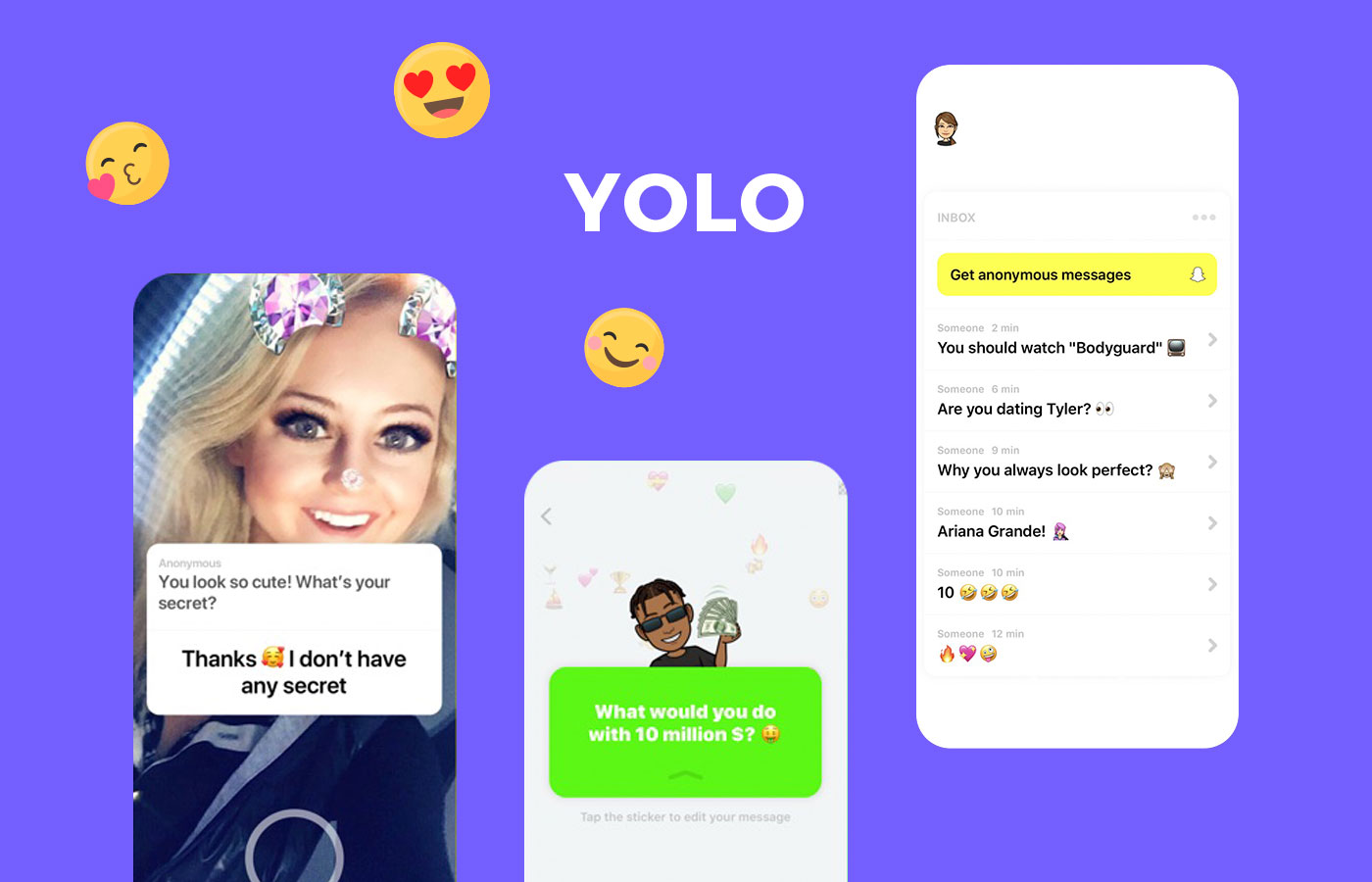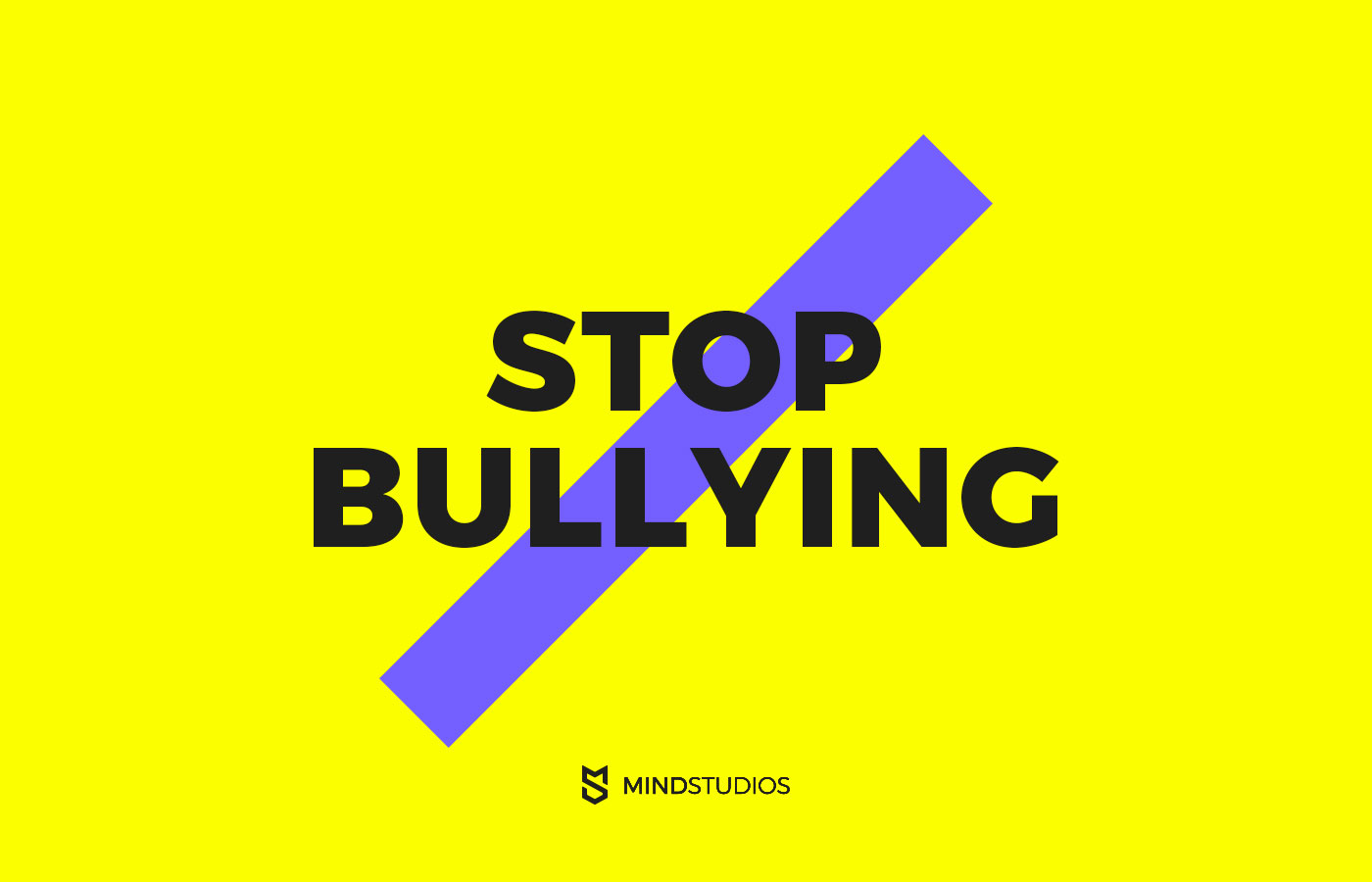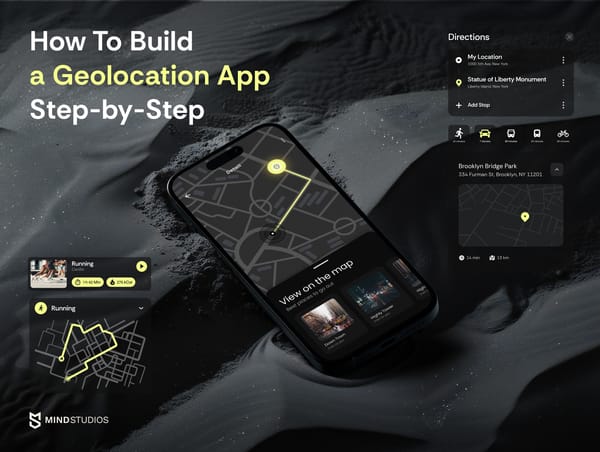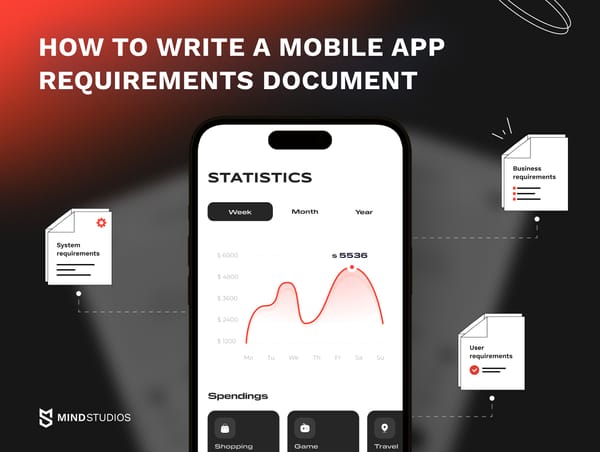In this article, we talk about how to make an app like YOLO, touch upon its ambiguity, and consider how much this kind of app might cost.
Anonymity on the internet is a blessing for some and a curse for others, but it’s undeniably one of the most popular ideas for apps this year, and the forecasts are looking good for 2023. If you’re interested in anonymous question app development, this article will answer some of your inquiries.
Content:
- How the YOLO app works
- The issue with anonymous Q&A platforms
- How to build an anonymous questions app
- Cost to make an app like YOLO
- YOLO-like app development: Conclusion
How the YOLO app works
At its core, YOLO isn’t very innovative. It’s not the first platform for anonymous communication. The closest and best known analogs are Ask.fm and Curious Cat.me — platforms specifically created so people can ask other people things without revealing themselves. Ask.fm has an app for iOS and Android; Curious Cat is only available as a website.
These platforms come and go: there were many more similar services before, and there will probably be new ones in the future. However, none has gained wide popularity as fast as YOLO. So what was so special about YOLO and how can you develop an app to ask questions anonymously?
The uniqueness of YOLO is that it’s like a side app to Snapchat. It was developed with Snap Kit, a selection of tools officially offered by Snap for developers who would like to integrate Snapchat’s features into their apps. Read about how to create an app like Snapchat in one of our articles. Essentially, YOLO isn’t a completely separate platform like the ones mentioned above. It only works if the user has a Snapchat account.
With YOLO, users log in with their Snapchat accounts. Then they can add a sticker to their photos and videos asking for questions or comments. Followers can then answer these questions and add comments, to which posters can respond in their Stories. The YOLO sticker looks similar to the question sticker in Instagram Stories:

But if YOLO is the same as Instagram, then what’s the point? Well, here’s the key difference:
- With Instagram Stories, the poster can always see who’s asking the question. The poster can choose not to reveal the asker’s name to the public in the answer sticker, or the poster can tag them with @mention. The question can be anonymous for followers but not for the posters themselves.
- With YOLO, the poster can’t see the name of the user asking a question.
YOLO kind of combined Instagram Stories questions with the anonymity of platforms like Curious Cat and then integrated it all into Snapchat, a platform hugely popular among teens. Those same teens who are curious yet who are sometimes shy about asking questions and commenting on photos directly.
The creator of YOLO, Gregoire Henrion from Popshow Inc., says that the idea behind YOLO was to “unlock super good behaviors” from its users. However, does it actually work as intended?
Read about: On-Demand Logistics App Development
The issue with anonymous Q&A platforms
The biggest problem with platforms targeted at teens and young adults — like Snapchat and YOLO — is that few of us are proud of how we behaved between the ages of 13 and 18. Bullying is a very real problem in schools, and bullies use even non-anonymous social media platforms like Instagram and Facebook. More and more social platforms are taking steps to monitor and moderate offensive language. They’re also adding ways to report messages and users for hate speech.
If kids are given the means to speak anonymously — without fear of being found out and scolded/punished — usually, things only intensify.
Sarahah used to have an iPhone app, but it was removed from the Apple App Store when the app owners couldn’t provide a good way to deal with bullying. Bullying was one of the reasons Yik Yak was closed. Ask.fm has faced similar accusations.
Therefore, when you develop an anonymous questions app similar to YOLO, be it a separate platform or an app integrated into some other platform, one of the most important things you should think about is hate language and bullying.
How to build an anonymous questions app

YOLO isn’t ripe on features; it basically offers two:
- Post a sticker to ask a question/ask for comments
- React to stickers by answering/commenting anonymously
The stickers are customizable to a degree, but it’s not that important to most users. YOLO’s biggest perk is its smooth integration with Snapchat. Seeing as it took the #1 spot on the App Store within a week of its launch without any promotion (pushing down Snapchat itself), it seems YOLO doesn’t need anything else.
If you turn your gaze to separate platforms like Ask.fm and Curious Cat, though, you’ll find that the market competition pushed them to diversify their features. Curious Cat has Communities — groups where like-minded users can find friends to talk with. Ask.fm has a feature they call Photo Poll that allows users to post two photos and ask others to choose the one they like more; the wall of Photo Poll questions is called Versus.
Let’s see what features you’ll need to implement in an app for anonymous questions and answers.
1. Sign up/sign in
Users need an account to track and answer questions. On YOLO, you need a Snapchat account, while Ask.fm and Curious Cat users can ask questions even without an account. This latter option is often used for bullying, however — it’s significantly more difficult to track someone who doesn’t have an account linked to an email or a Facebook account. There are ways to battle this that we’ll cover a bit later.
Unless you’re developing a platform exactly like YOLO, meaning it will be integrated into a specific social network, we recommend implementing sign-up via Facebook or Twitter. Twitter is the social network when it comes to sharing links to anonymous asking platforms. It’s practically teeming with Curious Cat links these days.
2. Profiles (optional)
There are no profiles on YOLO, which is logical, seeing as its only purpose is to add stickers with questions to Snapchat Stories and it uses Snapchat for log-in functionality. However, this means users can access their questions and answers only as long as their Snaps are available, which is 24 hours in Stories and 30 days max if you send a Snap to someone directly and they don’t open it (if they do, the Snap is deleted after it’s viewed by all recipients).
On Curious Cat and Ask.fm, questions and answers are stored as long as an account exists. Hence, users can see all their answers in their profiles. If you decide to allow your anonymous Q&A app users to keep everything, you’ll need to provide a profile feature.
3. Asking/answering questions
This is the core anonymous questions app feature and the purpose of the whole app — at the same time, it’s the most ambiguous of features for the reasons stated above.
There are two approaches to providing anonymity in a YOLO-like app. The first is to allow anyone to access the app even without registering. But again, this is a dangerous approach as it invites bullying.
The second approach, and the one used by YOLO, is to require all users to register and then hide their identities when they want to make anonymous comments. In this case, recipients won’t know who they’ve received comments/questions from, but the YOLO app will. If a message is offensive, the user behind it can be banned from the app.
Ask.fm and Curious Cat use the first approach, and they’ve attracted their share of criticism for facilitating bullying. Now, both platforms allow users to forbid questions from unregistered users while still allowing users to stay anonymous. This is similar to how YOLO works.
4. Reporting and blocking

These are must-have features for any social platform, anonymous or not. Reporting and blocking provide two levels of protection that users can employ. When a comment can’t be considered hate speech but is personally offensive, the recipient can block the sender. Users can be blocked even if they leave comments anonymously — given that they’re registered with the platform. If it comes to actual bullying and hate speech, users must have an option to report comments for platform moderators to investigate.
5. Moderation
When users report messages, there must be someone to deal with the issue. It can be a person (or a team), or it can be an algorithm. Engines exist that can detect hate speech by keywords, for example. Machine learning can be implemented to improve the results.
6. Random questions
This is a feature many social platforms have. The “Did You Know?” mini-game on Facebook has a mechanism for generating random questions. YOLO has a randomizer — by clicking a dice button, users can generate questions besides “Ask me anything” and “Send me a comment,” meaning it’s possible not only to answer questions from other users but to ask them things without their posting question requests. To enable this kind of feature, you’ll need a database of random questions and your app development team will have to build an algorithm for randomizing them. Some platforms also allow users to submit questions to be added to the database.
A random questions feature is needed to keep users engaged with your platform even when they don’t have many active followers.
7. Multimedia support
Adding an image, GIF, or video is always a good way to liven up a message. It can help illustrate a question or answer and make it funnier. However, keeping in mind the potentially problematic nature of anonymous communication apps, you might also need to implement an engine that can detect nudity, gore, and other types of harmful images. This can be achieved using various existing APIs, or you can ask your development company if they can build an algorithm from scratch.
8. Social sharing and likes
Millennials and Gen Z are obsessed with likes. It’s way easier to tap a heart button than to leave a comment. So likes is a feature many will appreciate.
Sharing is another popular feature, and it’s especially important if you’re building a platform that isn’t integrated into a social network. Allow your users to share questions they’ve answered to Facebook, Twitter, or anywhere else — with a link back to your platform. This will achieve two goals:
- Your users will be more engaged and will be able to share their answers anywhere they want.
- Your platform will get more attention and, chances are, grow its audience.
9. Syncing
Apps like YOLO and Ask.fm are often used on different devices and have web versions. Syncing is necessary so that data is available from any device at any time.
10. Design customization
The very least you should do is offer users a selection of color themes. However, you can also allow them to set a background image, either from a selection you provide or from their own images. The more customizable your app, the better.
At the same time, to make the user experience great, the Q&A app design should be uncluttered and easy to navigate. Too many buttons and a long process to post a question/answer will turn many users away, even if your app looks like a work of art.
Cost to make an app like YOLO
Here’s the team you’ll need to bring your Q&A app idea to life:
- 1 project manager
- 1–2 UI/UX designers
- 1 Android developer
- 1 iOS developer
- 1 frontend developer (optional)
- 1 backend developer
- 1 QA specialist
You can start with making an app MVP for only iOS or Android and add the other platform later. You can also forego a frontend developer if you’re not planning on building a web version of your app.
Here’s a rough estimate of time needed to make an anonymous questions app:
| Feature | Time (hours) |
|---|---|
| Sign up/sign in | 50+ |
| Profiles (optional) | 160 |
| Asking/answering questions | 500 |
| Reporting and blocking | 80 |
| Moderation via AI | 120+ |
| Random questions | 50+ |
| Multimedia support | 120+ |
| Social sharing and likes | 40 |
| Syncing | 30 |
| Design customization | 280+ |
| Total: | 1430 |
Based on this list and the need for specialists other than developers, we can estimate the cost to make an anonymous questions app at around $64,350. Depending on what technologies you decide to use (machine learning or human moderation, for example), the price can go up or down.
YOLO-like app development: Conclusion
Building an anonymous Q&A mobile app isn’t the most challenging of tasks. These kinds of apps rarely have too many features, and the features they do have are usually not too difficult to implement — unless we’re talking about moderation and nudity detection via AI and machine learning.
We’ve covered the most essential facets of developing an anonymous question app. If you would like more information about how to make an anonymous questions app — or if you have a clear business idea and would like to estimate the cost to make an anonymous Q&A mobile app — get in touch with us. At the Mind Studios app agency, we have professional designers and developers able to tackle this task.




![How to Create an On-Demand Medicine Delivery App [Expert Guide]](https://themindstudios.com/blog/content/images/size/w600/2025/03/IMG-1-Cover-6.jpg)


